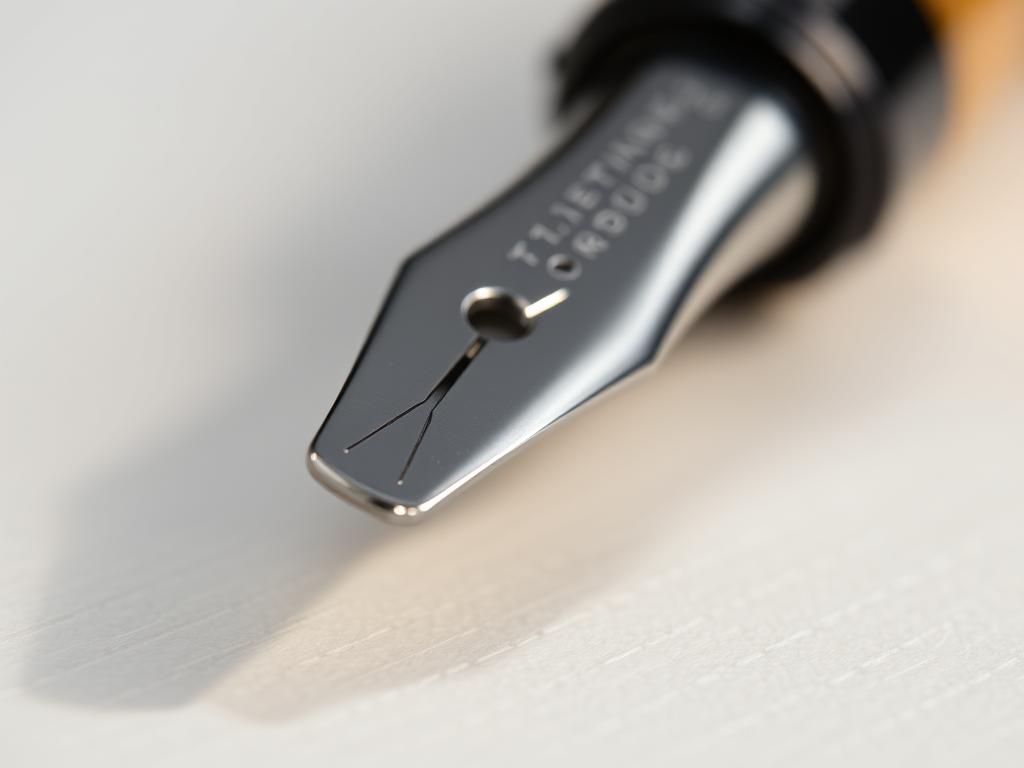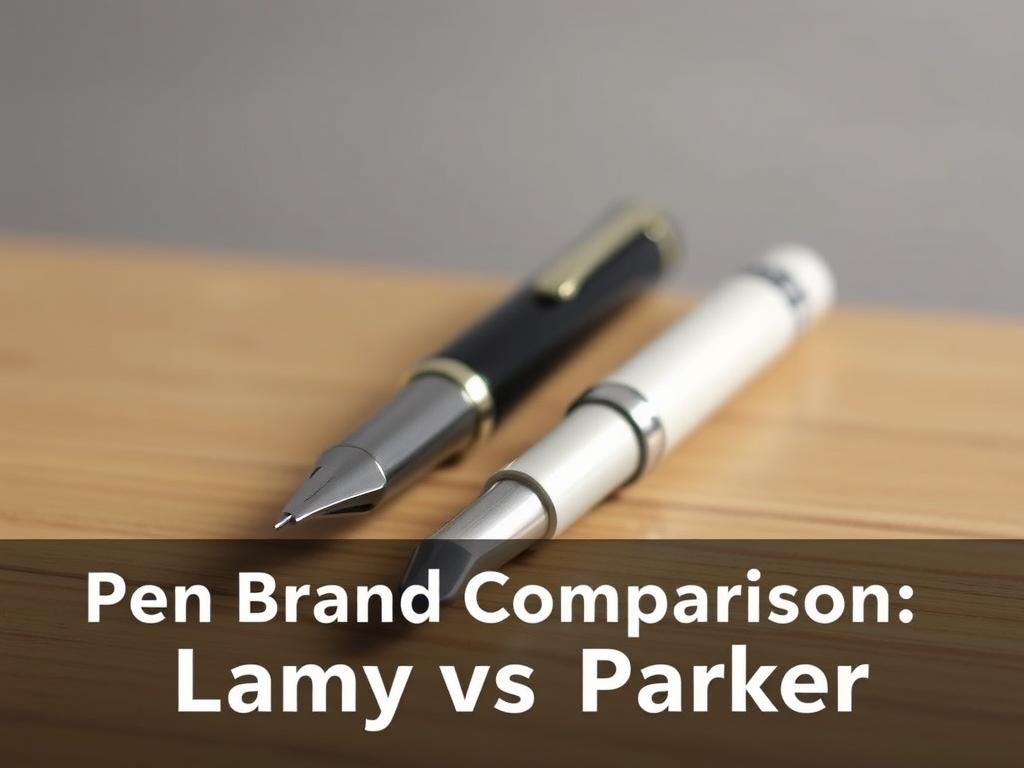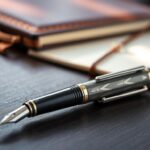Choosing the right writing instrument can elevate your daily experience, whether you’re jotting notes or crafting letters. This article dives into a detailed comparison of two iconic brands, exploring their strengths in design, performance, and value. Readers will discover how decades of craftsmanship and innovation shape these pens’ unique identities.
The analysis focuses on legacy, nib quality, filling systems, and pricing. Both brands have loyal followings, but their approaches differ. One prioritizes sleek modern aesthetics, while the other leans into timeless elegance. Real-world user feedback highlights practical differences in comfort and ink flow.
Fountain pens are a key focus here, though ballpoint and rollerball options are also discussed. By blending historical context with hands-on testing insights, this guide helps readers find their perfect match. Let’s explore what makes each brand stand out in a crowded market.
Key Takeaways
- Examines design philosophy, nib performance, and pricing differences.
- Highlights user experiences with ink flow and ergonomics.
- Compares filling systems for convenience and maintenance.
- Balances modern innovation against classic craftsmanship.
- Provides actionable insights for personal or gifting decisions.
Introduction: Setting the Stage for a Pen Comparison
Selecting a pen that matches your style enhances creativity and precision. For newcomers, this choice shapes how ideas flow onto paper—whether scribbling quick notes or drafting heartfelt letters. Among writing tools, fountain pens stand out, blending artistry with functionality in ways ballpoints rarely match.
What makes these instruments unique? Their nib—the metal tip—responds to pressure and angle, creating dynamic line variations. Paired with quality paper, they glide smoothly, reducing hand fatigue during long sessions. This synergy between tool and surface elevates everyday writing into an experience.
| Pen Type | Key Feature | Best For | Maintenance |
|---|---|---|---|
| Fountain | Customizable nibs | Artistic writing | Regular cleaning |
| Ballpoint | Quick-drying ink | Everyday tasks | Low effort |
| Rollerball | Fluid ink flow | Signature styles | Frequent refills |
This guide explores four pillars: design appeal, historical roots, performance consistency, and value. Even subtle differences in grip width or ink capacity impact comfort. We’ll keep things approachable—no jargon, just clear insights to help you decide.
Ready to dive deeper? Let’s uncover how craftsmanship and innovation shape these timeless tools.
lamy vs parker: Overview of Brand Legacy and Innovation
Behind every great pen lies a legacy of craftsmanship and innovation. Two industry giants have shaped modern writing culture through distinct approaches—one rooted in bold experimentation, the other in refined tradition. Their journeys reveal how heritage and progress coexist in the world of fine writing instruments.
History and Heritage of Lamy and Parker
The German brand launched in 1930 with a focus on functional design. Its Lamy Safari, introduced in 1980, became a game-changer with its ergonomic grip and vibrant colors. Collectors still praise its lightweight feel and durable ABS plastic body.
Across the channel, the British counterpart began in 1888, crafting elegant pieces like the Duofold. These early fountain pen models set standards for reliability, using materials like lacquered brass. “A pen should be both a tool and an heirloom,” noted a 1950s designer catalog.
Modern Innovations and Brand Evolution
Today’s models showcase cutting-edge upgrades. The Lamy 2000 features a seamless Makrolon body and spring-loaded clip, while newer nibs offer smoother ink flow. Recent updates include scratch-resistant coatings and eco-conscious packaging.
The rival brand answers with refined cartridge systems and precision-tuned nibs. Their latest releases balance classic aesthetics with quick-drying inks, appealing to professionals and students alike. Both brands now prioritize quality control, ensuring every pen meets rigorous performance standards.
From post-war innovations to smart material choices, these manufacturers prove tradition and technology can coexist. Their stories remind us that even everyday tools carry decades of problem-solving passion.
Design and Build Quality: Aesthetic and Practical Considerations
A pen’s visual identity and physical feel shape its connection with the user. Material choices and ergonomic details often determine whether a writing tool becomes a daily companion or collects dust in a drawer. Let’s explore how two leading brands balance style with functionality.
Distinctive Design Features
The German brand’s approach leans into bold modernity. Its models often feature angular silhouettes and textured grips, prioritizing comfort during long sessions. Vibrant colors—from neon yellows to muted grays—cater to personal expression, while special editions introduce seasonal hues. Many users appreciate the plastic construction for its lightweight durability, ideal for students or travelers.
A standout detail is the triangular grip section, designed to guide finger placement. The cap snaps securely with a satisfying click, reducing the risk of ink drying. For those seeking flair, bold color options and transparent ink windows add playful practicality.
Classic, Streamlined Profile
In contrast, the British counterpart favors timeless elegance. Sleek metal barrels and understated clips reflect professional sophistication. The tapered size fits comfortably in smaller hands, while polished finishes resist fingerprints. Many models use brass cores wrapped in lacquer, achieving a premium heft without sacrificing balance.
The threaded cap twists smoothly into place, appealing to those who value precision mechanics. Neutral colors like navy and burgundy maintain office-appropriate versatility. Though slightly heavier, the weight distribution prevents fatigue during extended writing sessions.
Both brands prove that quality design marries form and function. Whether drawn to vibrant innovation or subdued refinement, users find tools tailored to their hands and habits.
Nib Performance and Writing Experience
The true test of a pen lies in how it dances across the page. A well-crafted nib transforms writing from a task to a tactile delight, adapting to your hand’s rhythm. Let’s explore how engineering meets artistry in these precision tools.

Stroke Quality and Nib Options
Enthusiasts praise the German model’s interchangeable nib sizes, ranging from extra-fine to broad. Users report crisp lines with consistent ink flow, whether sketching diagrams or signing documents. One reviewer noted, “The triangular grip positions your fingers naturally, making every stroke intentional.”
In contrast, traditional models offer springier nibs that respond to pressure shifts. This flexibility creates dynamic line variations—perfect for expressive pen writing. Both brands use stainless steel for durability, though some premium options feature gold plating for smoother glides.
Comfort and Ergonomics in Daily Use
Long writing sessions demand thoughtful design. The Lamy Safari’s lightweight body and textured grip reduce hand fatigue, according to student testimonials. Its snap-on cap also prevents accidental ink drying during pauses.
Meanwhile, sleeker profiles prioritize balance over bulk. A novelist shared, “The weight distribution lets me write for hours without cramping.” Both styles prove that nib alignment and grip contours directly impact writing experience.
From journaling to professional drafting, these details matter. As one calligrapher put it: “Your pen should disappear in your hand, leaving only the words.”
Filling Mechanism and Ink Compatibility
How you refill a pen shapes your relationship with it. The process becomes part of the writing ritual, blending practicality with personal preference. Two systems dominate modern designs: cartridges for quick swaps and converters for ink customization.
Cartridge versus Converter Systems
Pre-filled cartridges offer plug-and-play simplicity. The German brand uses proprietary designs, ensuring a snug fit but limiting third-party options. Users praise their leak-proof seals, though some find the color range restrictive. “I stick to their blue-black—it’s reliable,” shared a frequent traveler.
Converters unlock broader creativity. Screw-driven mechanisms let you draw inks from bottles, ideal for shimmering or rare shades. The British brand’s integrated system works smoothly with international standards. This flexibility appeals to artists mixing custom hues.
| System | Pros | Cons | Best For |
|---|---|---|---|
| Cartridge | Instant use | Limited colors | On-the-go users |
| Converter | Ink variety | Refill effort | Enthusiasts |
Flow consistency varies between systems. Cartridges maintain steady output, while converters demand careful priming. One calligrapher noted, “A well-primed converter feels like silk—but skip a step, and it stutters.”
Both approaches have loyalists. Your choice hinges on whether you prioritize convenience or creative freedom. As ink bottles multiply on desks worldwide, the debate continues—one satisfying click or twist at a time.
Price and Value Considerations
Balancing cost and quality defines smart shopping for writing tools. Entry-level models from both brands start under $30, but street prices often dip lower during sales. One German-made option retails at $32 yet frequently sells for $24 online, while a British counterpart’s MSRP of $35 drops to $28 through third-party sellers.

Retail Prices and Overall Cost Comparison
Included accessories significantly affect long-term value. Some models ship with converters, saving users $8-$12 on separate purchases. Others require buying proprietary cartridges, adding $5 per pack. “The initial price tag doesn’t tell the whole story,” notes a stationery blogger. “Factor in pen ink costs over five years, and budget picks can become pricey.”
Collectors prioritize limited editions with piston filler systems, which hold value better than standard models. Vibrant colors and seasonal releases also command premiums. A 2022 mint-green special edition now resells for double its original $45 price.
While both brands offer diverse ranges, one excels in bold hues for personalization, the other in timeless neutrals. Users seeking affordability often lean toward interchangeable nibs and included converters. Those valuing heirloom quality accept higher upfront costs for durable metals and legacy designs.
Ultimately, value perception hinges on usage. Frequent writers appreciate modular systems that reduce ink expenses, while occasional users prioritize sleek aesthetics. As one reviewer summarized: “Your pen’s worth depends on how often it meets your hand.”
User Reviews and Maintenance Insights
Maintaining a pen’s performance requires attention to detail—and users share hard-won wisdom about keeping their tools in top shape. Enthusiasts emphasize that regular care preserves nib precision and prevents ink clogs, especially with daily use.
Maintenance, Cleaning, and Longevity
Simple routines make a difference. For fountain pen cleaning, collectors recommend:
- Flushing with lukewarm water monthly
- Using bulb syringes to clear stubborn ink residues
- Drying nibs upright to protect feed alignment
The grip section often collects oils from hands. A soft cloth wipe-down maintains texture and prevents slippage. Plastic-bodied models benefit from occasional polish to avoid clouding.
Real-World Experiences and Collector Feedback
Long-term users praise pens with standardized nib sizes for consistency across replacements. One journaler noted, “Swapping nibs feels seamless—no adjustment period needed.” Converters earn mixed reviews: while piston systems hold more ink, screw-types offer better flow control.
Durability tests reveal surprises. A decade-old model with a brass core still writes smoothly, while some plastic grips show wear after heavy use. For deeper insights, luxury pen maintenance guides detail advanced preservation techniques favored by experts.
Collectors emphasize that quality shines through time. As one remarked, “A well-loved pen shouldn’t just write—it should tell your story with every line.”
Conclusion
Choosing your ideal writing companion depends on balancing heritage with modern needs. Both brands deliver exceptional nib performance, though their approaches differ—one favors precise steel nibs for consistent lines, while the other offers springier options for expressive flourishes. The price range varies widely, with budget-friendly plastic models and premium metal designs catering to different priorities.
Consider how ink systems align with your habits. Cartridge users value quick swaps, while converter fans enjoy endless color options. Grip shape and size also matter—ergonomic contours prevent fatigue during long sessions, whether drafting novels or signing documents.
Durability shines through thoughtful details: scratch-resistant coatings, secure cap mechanisms, and easy cleaning processes. While one brand excels in bold colors, the other masters timeless profiles. Your best pen choice ultimately reflects how these elements support your unique pen writing rhythm.
Which features matter most to you? Share your top picks for fountain pen excellence in the comments below.
FAQ
Which brand offers more nib size options?
Lamy provides a wider range of interchangeable nibs, including extra-fine to broad sizes, while Parker focuses on standard options like fine and medium. Both allow customization for different writing styles.
How do cleaning processes differ between these pens?
Models like the Lamy Safari use a removable grip section for thorough cleaning, whereas Parker’s sealed designs may require flushing with a bulb syringe. Regular maintenance ensures consistent ink flow.
Are cartridges interchangeable between brands?
No—Lamy uses proprietary cartridges, while Parker employs international standards. However, converters allow both to work with bottled inks, expanding color choices.
Which brand better suits left-handed writers?
Lamy’s triangular grip section promotes ergonomic positioning, favored by many left-handed users. Parker’s rounded barrels offer a neutral hold, catering to diverse grip styles.
Do steel nibs affect writing quality compared to gold?
While Parker’s gold nibs provide smoother strokes, Lamy’s stainless steel options deliver precision at lower prices. Both materials perform well with quality paper.
How durable are these pens for daily carry?
The Lamy 2000’s Makrolon resin resists scratches, while Parker’s lacquered finishes maintain shine. Clip strength and cap seals differ, so check reviews for pocket-friendly models.
Can shimmer inks clog these fountain pens?
Parker’s narrower feeds may require frequent cleaning with particle-heavy inks. Lamy’s broader feeds handle shimmer better, though both brands recommend regular maintenance.
Which brand retains value for collectors?
Limited-edition Parker models often appreciate due to heritage, while Lamy’s modern designs attract contemporary enthusiasts. Condition and rarity drive resale prices for both.


